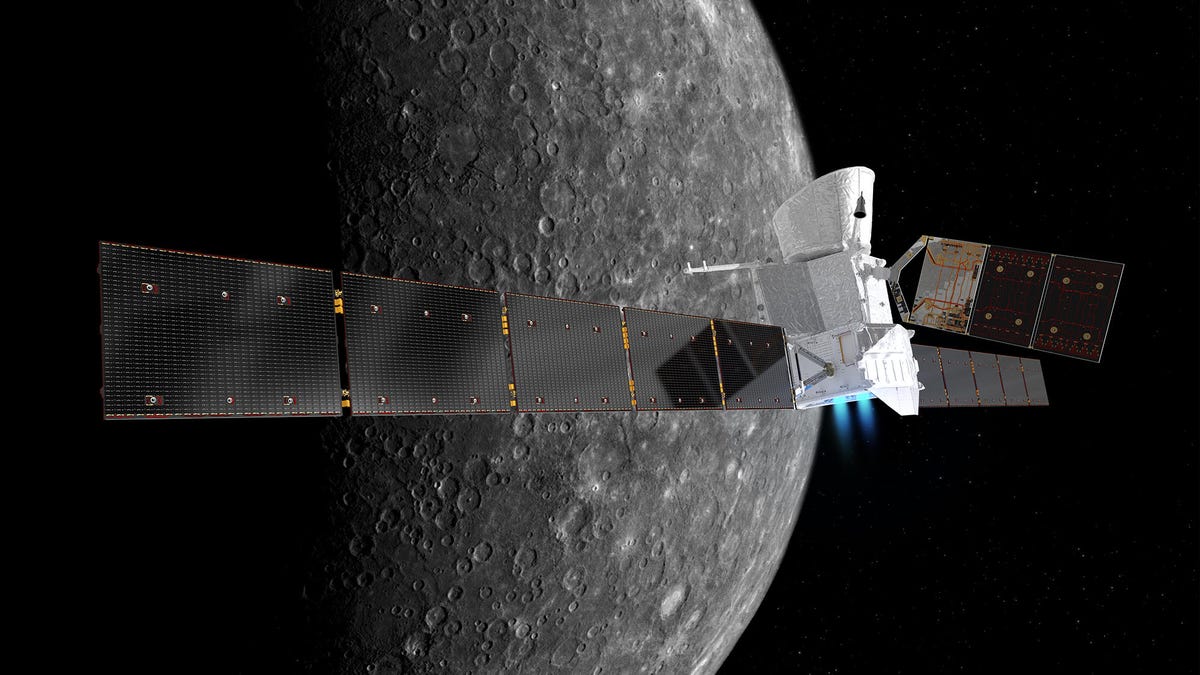How to follow BepiColombo spacecraft's thrilling Venus flyby tonight
Yes, we're expecting images of the enigmatic planet.
Venus is the star of the solar system right now after scientists discovered phosphine -- a gas with possible biological origins -- lurking in its clouds. Lucky for us, the BepiColombo spacecraft will be zooming past the planet this week on the way to its ultimate destination of Mercury.
BepiColombo, a joint project of the European Space Agency (ESA) and Japanese space agency JAXA, will have some of its science instruments turned on as it makes a close approach to Venus on Wednesday night US time.
ESA Operations will share flyby updates via live-tweets starting at 8:30 p.m. PT on Oct. 14.
Tomorrow morning, @BepiColombo will make its first close approach of #Venus!
— ESA Operations (@esaoperations) October 14, 2020
Join us from 03:30 UTC (05:30 CEST), when we will be live-tweeting updates during the milestone planetary flyby#BepiColomboVenusFlyby pic.twitter.com/IJJK6SIBQa
BepiColombo's "selfie" camera will be on. For an example of what to expect image-wise, check out these views from the spacecraft's Earth flyby earlier this year.
It will take a few hours to receive images back on Earth, but you can keep an eye on the main BepiColombo Twitter account for updates.
Smile! 📷 @ESA_MTM is scheduled to take two sets of images of #Venus starting today on the approach. We'll get the images back tomorrow – it will take several hours after close approach to have them all. #StayTuned! https://t.co/b1Z34O0Ab7 #BepiColomboVenusFlyby pic.twitter.com/Z3dLtc8MOF
— BepiColombo (@BepiColombo) October 14, 2020
Don't expect an answer to the the big question of whether Venus secretly hosts alien life in its clouds. That's going to take time, scientific sleuthing and likely a dedicated Venus mission to sort out. But BepiColombo will aim to collect data on the planet's atmosphere and the space environment around it.
Two Venus flybys are part of BepiColombo's long multiyear journey to Mercury. The second flyby is set for 2021. The maneuvers will help put the spacecraft in position to reach its destination.
BepiColombo is actually multiple spacecraft in one. They will split from each other once they reach orbit at Mercury in 2025. Mercury might be the main dish, but the mission will hopefully also add to our understanding of Venus at a time when science is eager to explore the possibility of alien life on the hot, inhospitable planet.


